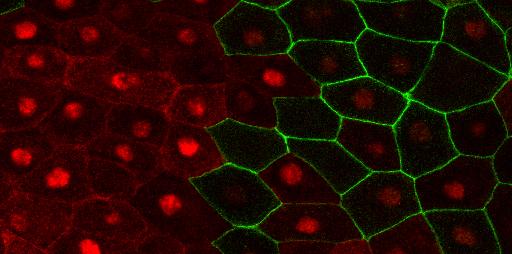
Credit: NIBB
Using the amphibian Xenopus laevis as a model, Drs. Noriyuki Kinoshita and Naoto Ueno from the National Institute for Basic Biology (NIBB), Japan and Dr. Ileana Cristea from Princeton University, USA have demonstrated that physical forces, such as centrifugal force, enhance cell-to-cell attachment and increase the stiffness of embryonic tissues as a result of force induced cell shape change. In addition, they have also elucidated a part of the signaling pathway underlying the phenomenon. This work revealing how physical forces build-up the structurally robust and stable embryonic tissue architectures during development was published on March 2020 in Cell Reports.
It is being increasingly recognized that in addition to genes and proteins, physical forces are also essential components for living organisms to proceed with normal development and maintain homeostasis.
This research has further deepened the existing collaboration between NIBB and Princeton University, which in turn has led to an article being published in 2019 (Ref: https:/
###
This work was conducted as an international collaboration between Naoto Ueno’s group, which includes Noriyuki Kinoshita and Yutaka Hashimoto (currently at Nagoya City University) at NIBB, Japan, and Ileana Cristea at Princeton University, USA.
This research was supported by KAKENHI 22127007 and 15H05865 from MEXT and JSPS in the case of Dr. Ueno and by the NIH R01HL135007 in the case of Dr. Cristea. The collaboration between Drs. Ueno, Kinoshita, Hashimoto and Cristea is also supported by the NINS Strategic International Research Exchange Promotion Program. The authors would like to extend their deepest thanks to the NIBB Functional Genomics Facility for providing technical support in our proteomic analyses.
Cell Reports
“Mechanical stress regulates epithelial tissue integrity and stiffness through the FGF receptor/Erk2 signaling pathway during embryogenesis” by Noriyuki Kinoshita, Yutaka Hashimoto, Naoko Yasue, Makoto Suzuki, Ileana M. Cristea and Naoto Ueno.
DOI: https:/
Media Contact
NIBB Office of Public Relations
[email protected]
Original Source
https:/
Related Journal Article
http://dx.




